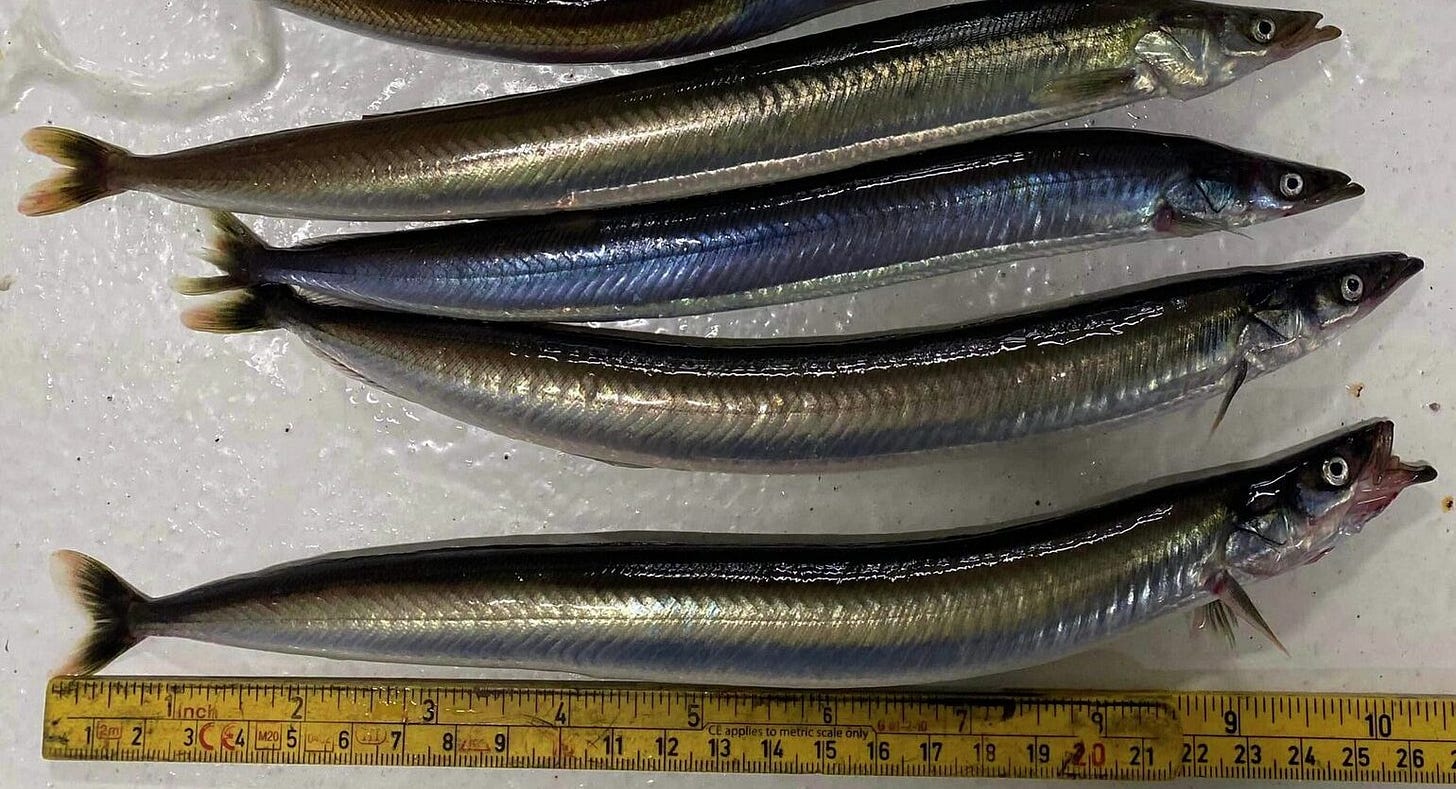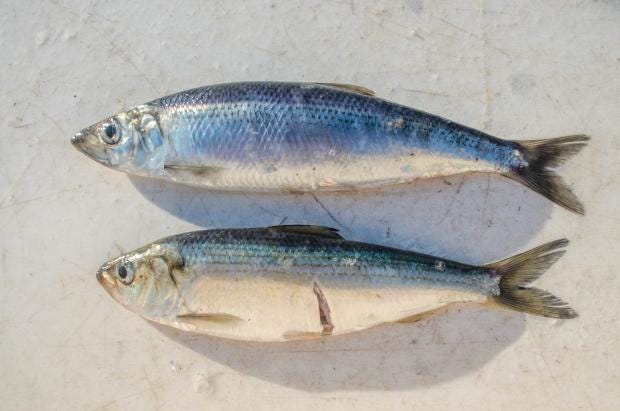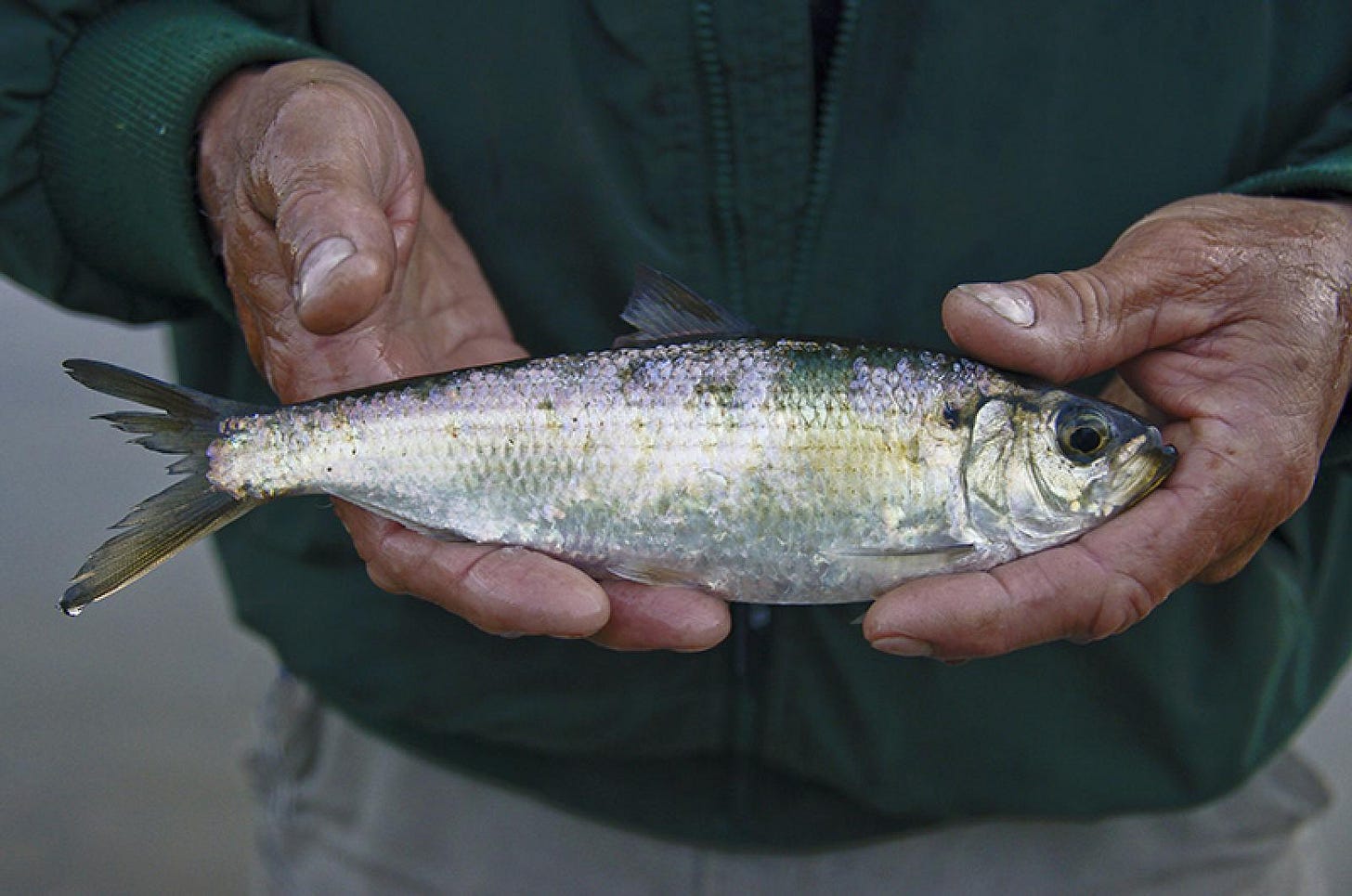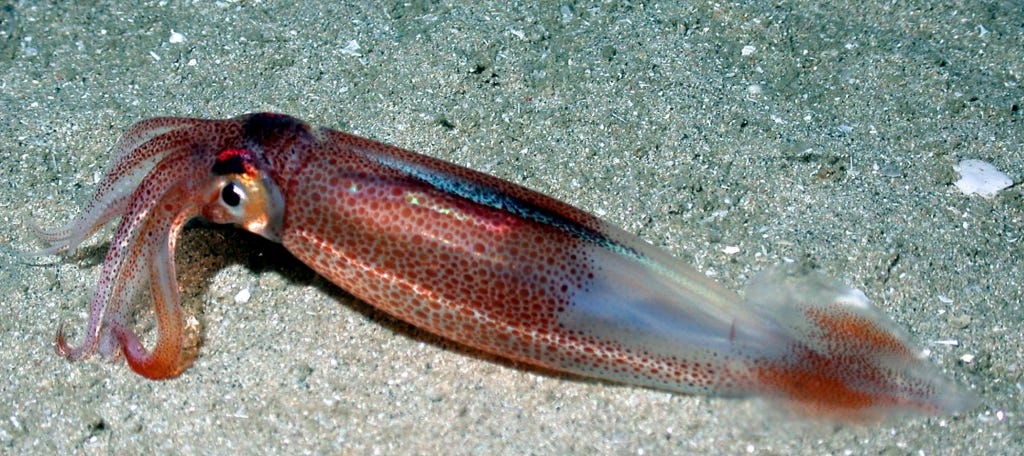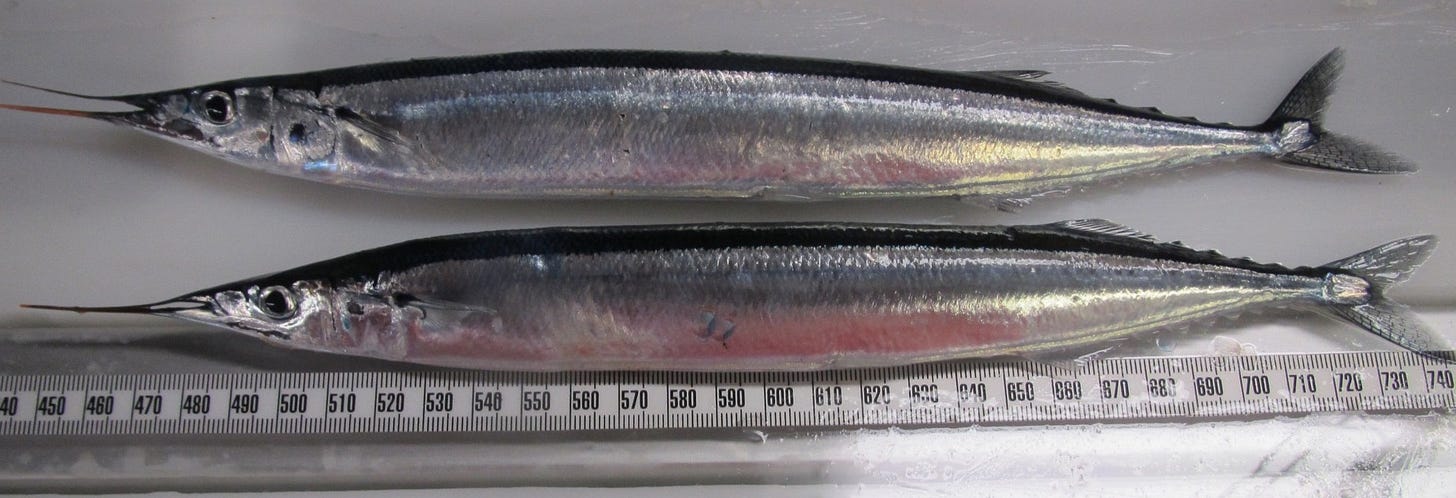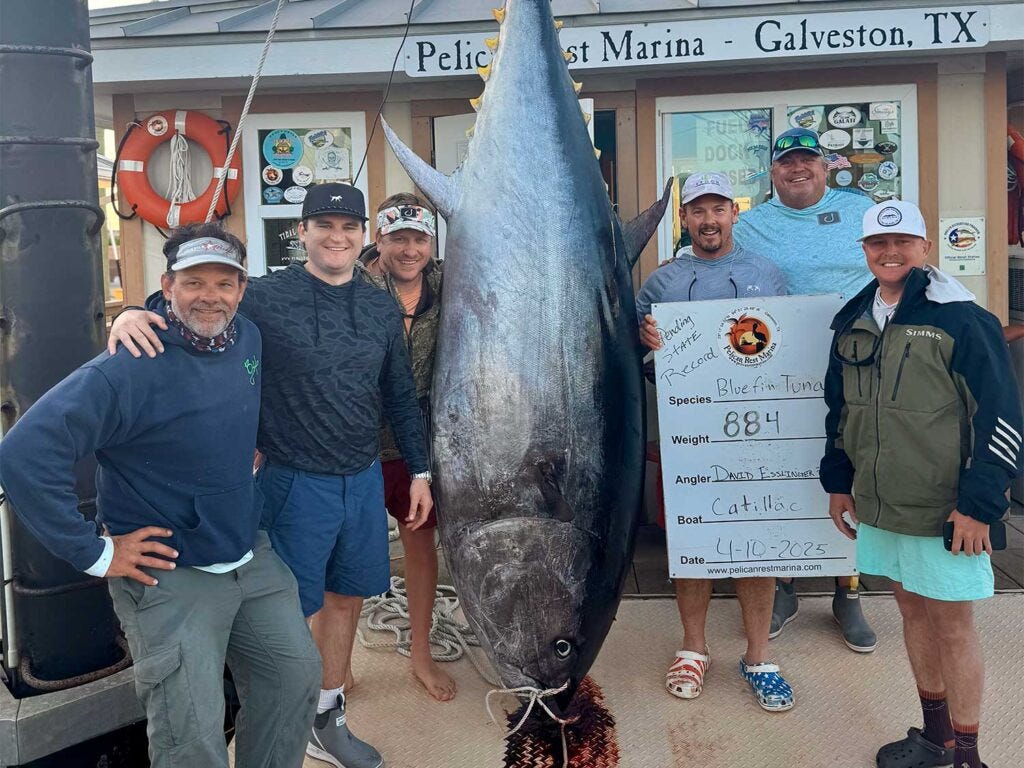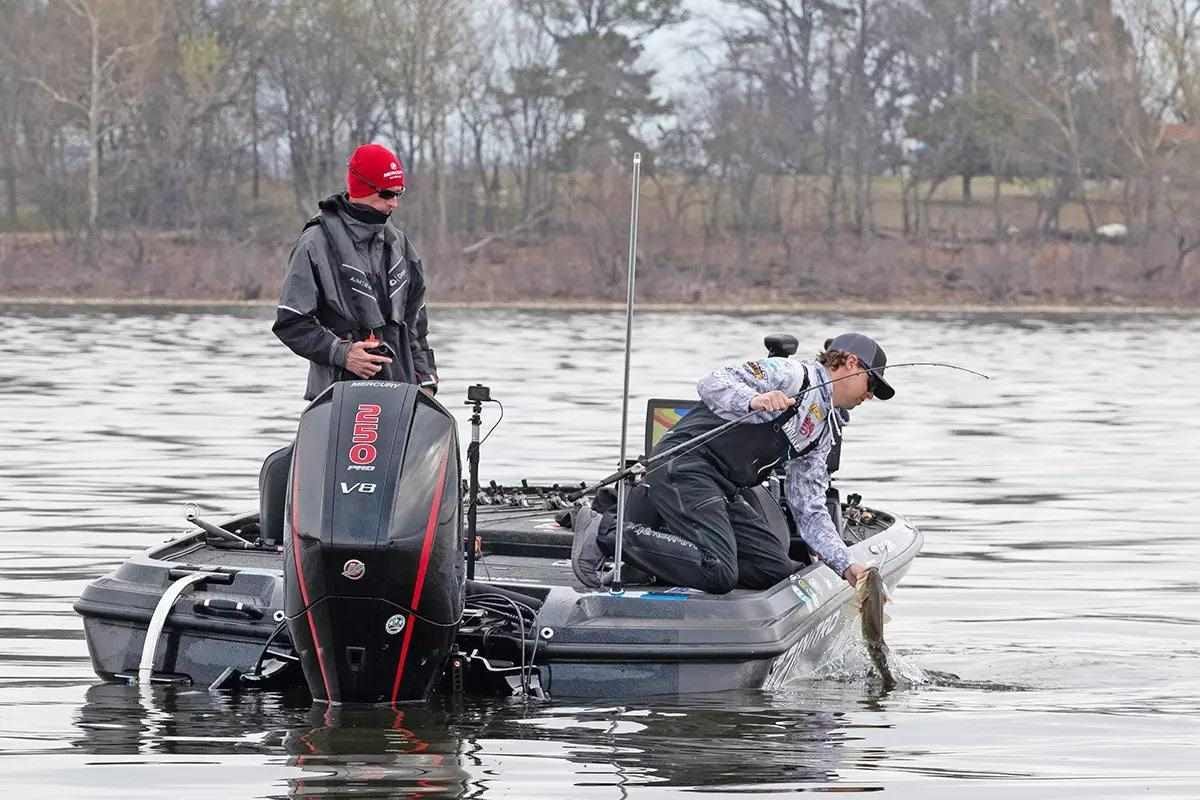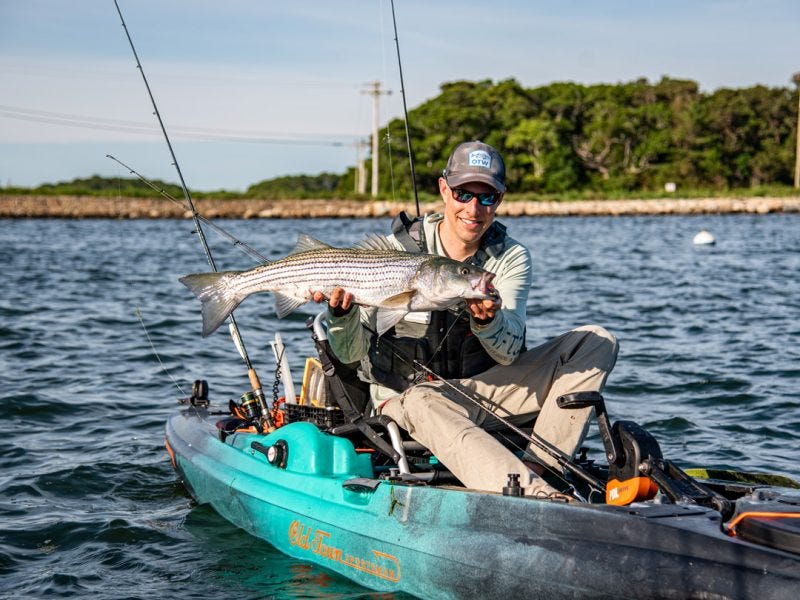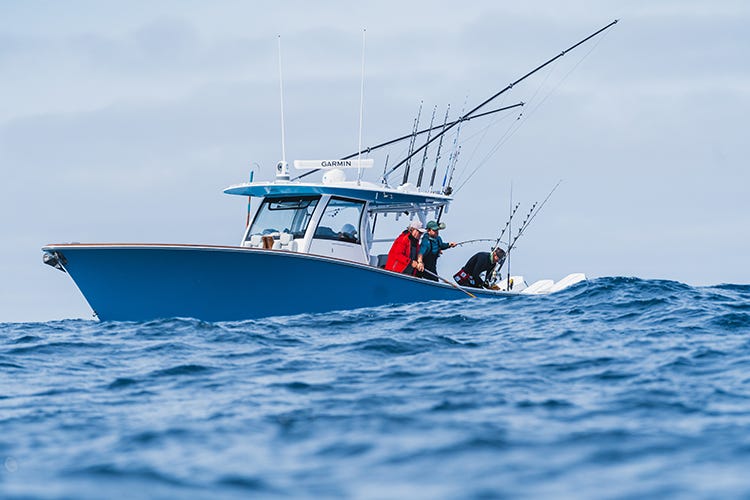The maritime rule of salvage has its origin in Roman law, which dictates that one who preserves or improves upon the misplaced property of another is owed compensation, even if the service was not requested. Let’s get out the internet trawler and get to work…
🎙️| Surfcast Podcast: Making Every Cast Count —> The team discusses the finer points of intentionally scanning water and making high-probability casts, using every pass through an area as an opportunity to gather more information about a spot.
🎥 | Brooksy: Road To Nowhere —> A picturesque adventure down the Aussie road less-traveled, with some exquisite multi-species action on spin and fly.
Fishing Reports | OnTheWater - FishermanMag - HullTruth - SOL
Renew your HMS vessel permits here.***
Local Knowledge: The Big Six of Northeast Forage
Northern Sand Lance - AKA “Sand-Eels”
A zooplanktivorous fish (meaning that it eats tiny marine animals at the base of the food chain), that lives in sandy substrate on the seafloor in relatively shallow water depths (less than 300 ft).
Sand lance spend their days feeding on zooplankton in the upper reaches of the water column and bury themselves in the sand at night.
Sand lance form dense schools that fluctuate widely in abundance and distribution over seasonal, annual, and decadal cycles.
Color varies but lance are typically an olive-brown or blue-green on the back, tapering to a silver or dull white on its sides.
Sand Lance support 72 regional predators including 45 fish species, two squids, 16 seabirds, and nine marine mammal…making them a ‘keystone species’ of the Northwest Atlantic Shelf.
Atlantic Alewife - Not to be confused with Herring
A diadromous species, meaning they migrate between fresh and saltwater to complete their life cycle.
The alewife matures in the ocean and returns to spawn in natal streams and ponds at an age of 3-4 years and size of about 9-12 inches.
Alewives can be found in the Western North Atlantic Ocean, from Nova Scotia to North Carolina, and blueback herring extend further south to South Carolina.
The alewife preys on small fishes, copepods, and small shrimps. As a small schooling fish, it is a cornerstone forage species for gamefish such as striped bass and bluefin tuna.
Atlantic Herring – Not to be confused with Alewife
A marine species that spends its entire life in saltwater, unlike the diadromous alewife. Atlantic herring form massive schools in continental shelf waters and are among the most abundant fish species in the northern reaches of the Atlantic.
Spawning occurs offshore from late summer to winter, depending on the region. Juvenile herring mature in 3–4 years at a size of 10–14 inches.
Known for their coordinated schooling behavior, Atlantic herring form tightly packed schools that can span miles, helping reduce individual risk from predators.
They are distributed throughout the Northwest Atlantic, from Labrador and Newfoundland south to North Carolina.
Atlantic herring feed primarily on zooplankton, such as copepods and krill, and are themselves an essential forage species for large predators.
Atlantic Menhaden – AKA ‘Bunks’, ‘Pogies’
A strictly marine species found along the U.S. East Coast. Spawning occurs offshore in the fall and winter, with larvae transported by ocean currents into estuaries, where they develop into juveniles.
Menhaden reach sexual maturity at around age 2–3 and can grow to 12–15 inches. They can live up to 10–12 years. They are one of the most highly schooling fish species on the Atlantic coast, forming dense, shimmering groups that can number in the millions.
Atlantic menhaden are found from Nova Scotia to Florida, with the highest concentrations shifting seasonally towards the mid-Atlantic from the Gulf of Mexico.
Unlike herring and alewife, menhaden are filter feeders, consuming phytoplankton and zooplankton by straining water through specialized gill rakers—making them key in maintaining water quality.
Longfin Atlantic Squid – AKA “Loligo”
A nektonic predator (meaning it actively swims and hunts for food) found in coastal and continental shelf waters of the Northwest Atlantic.
Lives in relatively shallow to mid-depth waters (typically less than 1,200ft), often over sandy or muddy bottoms.
Longfin squid are highly migratory, moving inshore during warmer months to spawn and offshore in cooler months.
Feeds on small fish, crustaceans, and other invertebrates, using its tentacles and sharp beak to capture prey.
Possesses a soft, torpedo-shaped body with long fins running down the sides of the mantle, and can change color rapidly using chromatophores.
Body color can vary dramatically but is often semi-translucent with shades of reddish-brown or pink, especially when excited or hunting.
Forms large schools or aggregations, especially during spawning periods; exhibits synchronized mating and rapid growth over a short lifespan (less than 1 year).
Atlantic Silverstripe Halfbeak - AKA ‘Beeks’, ‘Tuna Crack’
Identified by their long, stream-lined, darkish-green to black backs with a silver belly. They are named for their uniquely long lower jaw, evolved to sense vibrations from below, which often has a fleshy red tip.
The common halfbeak is native to the sub-tropical western Atlantic Ocean. Its range includes the Atlantic coast of North and South America, the Caribbean coast and the Gulf of Mexico, and its range extends to the Gulf of Maine.
They grow up to 11 inches in length, and spend the majority of their adult lives jetting just below the ocean’s surface. When schools are chased by the few pelagics that can match their top-end speed (~22mph), they are known to “spray” out the water in dramatic fashion. When you see it, you’ll know what I mean.
The omnivorous migratory species feeds mainly on small fish, plankton, algae, and fragments of vegetation such as sargassum (sea grasses).
Halfbeaks are closely related to Saury, Ballyhoo, as well as small-wing flyingfish.
Pending Texas Bluefin Tuna Record Could Top 876 Pounds (Marlin Magazine) – “A massive bluefin tuna caught off the coast of Texas in early 2025 is now under review as a potential state record. Weighing in at 876.5 pounds, the fish was landed after a grueling 6-hour battle aboard the Vera D. If confirmed, it will shatter the previous Texas bluefin record by more than 100 pounds—underscoring the Gulf's growing reputation as a trophy tuna destination.”
Spring Brushpile Fishing Tips to Target More Crappie and Bass (In-Fisherman) – As water temperatures warm and fish move shallow, spring brushpiles become hotspots for targeting both crappie and largemouth bass. This seasonal breakdown explores key structure, ideal water temps, and the subtle rig adjustments that can turn a good trip into a great one.
2025 Fishing Kayak Buyer’s Guide: Top Picks by Budget, Features, and Portability (On The Water) – Whether you're a weekend warrior or planning multi-day backcountry missions, this guide compares the best fishing kayaks of 2025 across categories like pedal-drive, inflatables, and budget-friendly sit-on-top models. Key pros, cons, and user scenarios make it easy to choose your next rig.
Why Your Best Crew Might Be the One You Keep (InTheBite) – Good crew is hard to find—but even harder to keep. This piece dives into why stability, experience, and trust aboard sportfishing boats leads to better results, smoother trips, and higher morale. Veteran captains share tips for building loyalty and making crew feel valued for the long haul."
Looking for more information about a product after reading The Weekly Salvage?
Try using GearSay, the first generative AI tool specifically tailored to help you find the right fishing tackle.
Thanks for reading The Weekly Salvage, until next week!
Have feedback or want to learn more?
Reach out to us on IG @Blowin_We_Goin




